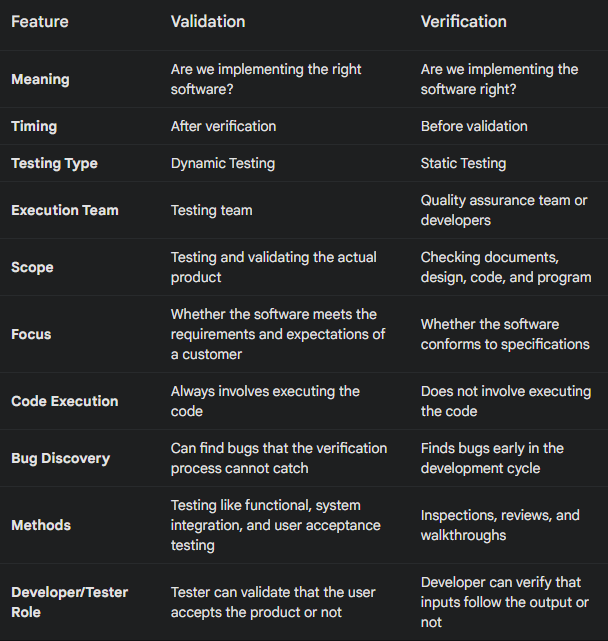In the realm of software testing validation vs verification, Knowing the difference between validation and verification in the context of software evaluation is crucial for assuring the quality and trustworthiness of software solutions. Both procedures have distinct functions within the software development lifecycle. When they work together, they produce a product that satisfies the needs of the end user as well as the requirements that have been laid forth
What is Verification?
Verification is a static process where we verify software artefacts (Requirements, Design or Code) as per the specified guidelines to determine whether such requirements and standards are followed. It offers a response to the question, “Are we creating the product correctly? Verification :*It includes reviews, inspections and walkthroughs. Validation Related to Verification cannot be done by code execution.
Key Activities in Verification
Reviews: Verifying that the code and papers adhere to the necessary requirements.
Walkthroughs: Giving stakeholders a demonstration of the software to get their input.
Inspections: Carefully look over software artefacts to find flaws.
What is Validation?
Validation, on the other hand, is a dynamic process that involves using the program to ensure that it meets the needs and anticipations of end users. Are we building the right product? is a question that has been elevated Validation involves a variety of testing methods, including system, integration, unit, and user acceptability testing.
Key Activities in Validation:
Unit testing: done for separate software components, it verifies if a particular function is functioning as expected or not
Integrity testing: Confirm that various parts function as intended when combined.
System testing: System testing ensures that all requirements are met by examining the system overall
UAT: Verifying that the software satisfies their needs by testing it with actual users.
Verification vs Validation Differences

Importance of Both Processes
To guarantee a software project’s success and quality, validation and verification are equally important. Early defect identification through verification lowers the cost and work involved in fixing problems later in the development cycle. Validation ensures a smooth release by meeting user expectations and enhancing customer satisfaction.
Teams may create software that is more dependable and easy to use by incorporating validation and verification into the software development process. This will increase the level of quality assurance.
Video Explanation
For a more detailed explanation, you can watch this YouTube video that covers the topic of validation vs verification in software testing.
Validation vs Verification: Software Testing Malayalam
Relevant Subjects
investigate software training institutes and courses that offer thorough instruction in these areas, if you have an interest in learning more about software testing. You can acquire the abilities and information required to succeed in the software testing industry from these resources.







